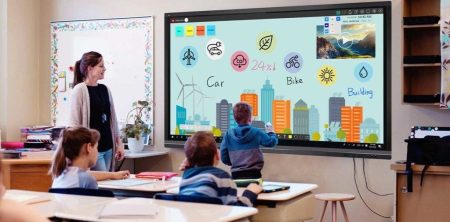The evolving landscape of education has presented unique opportunities for the innovative teacher seeking to connect with digitally native students. Among the most effective tools in the modern educator’s arsenal are popular kids animated shows that students already know and love. By bridging the gap between entertainment and education, teachers can tap into existing student engagement, transforming passive viewing experiences into active learning opportunities.
This strategic approach recognizes a fundamental truth about learning: information presented within a context of interest and enjoyment is more readily absorbed and retained. When educators incorporate references to beloved animated characters or concepts from popular shows, they effectively capture attention and create an emotional connection to the educational material being presented. This connection serves as a powerful motivational tool, particularly for students who might otherwise struggle to engage with traditional educational approaches.
The science behind this methodology is compelling. Neurological research demonstrates that positive emotional states enhance learning by activating the brain’s reward systems. When students encounter educational content linked to animated characters they enjoy, dopamine release creates positive associations with the learning material. These neural connections strengthen memory formation and recall, making the educational content more likely to be remembered and applied.
Effective implementation goes beyond simply showing animated content in the classroom. Skilled educators extract the educational elements inherent in popular shows, highlighting mathematical concepts, scientific principles, historical references, or linguistic patterns that appear within the entertainment context. This analytical approach teaches students to recognize educational value in unexpected places, fostering critical thinking skills that extend beyond classroom walls.
Subject integration represents a particularly effective application of this methodology. Language arts teachers might analyze narrative structure and character development in animated series, while science educators could explore how fictional worlds either adhere to or bend the laws of physics. Mathematics instructors find opportunities to discuss spatial relationships, patterns, and even algebraic concepts presented through animated sequences and game mechanics within these shows.
The accessibility of animated content provides another significant advantage. Quality animated programming often incorporates multiple layers of meaning, allowing differentiation for various learning levels within a single classroom. While some students might engage with basic plot elements and character motivations, others can analyze deeper themes, cultural references, or technical aspects of the same content. This natural differentiation helps teachers meet diverse student needs simultaneously.
Cultural literacy represents another beneficial outcome of this approach. Many popular animated series incorporate references to literature, history, art, and music that might otherwise remain inaccessible to young learners. When teachers highlight these connections, they expand students’ cultural knowledge base and demonstrate the interconnectedness of various disciplines. This holistic perspective counters the artificial compartmentalization often found in traditional curriculum structures.
Creativity and imagination flourish within this educational framework. When teachers invite students to extend animated narratives, predict alternative outcomes, or create their own stories within established fictional universes, they foster creative thinking and narrative skills. These activities develop both critical analysis and creative production abilities, preparing students for future academic and professional environments where innovation is highly valued.
Social learning communities naturally form around shared interests in animated content. Teachers who recognize this phenomenon can harness it for educational purposes, creating collaborative projects and discussion groups centered on animated shows. These communities often transcend typical social boundaries, bringing together students who might not otherwise interact and fostering inclusive classroom environments where diverse perspectives are valued.
Digital literacy skills develop organically through this approach. As students engage with animated content across various platforms, they navigate digital environments, evaluate online information, and distinguish between factual content and fictional elements. Teachers guide this process, helping students develop the critical evaluation skills necessary for responsible digital citizenship in an increasingly complex media landscape.
Implementation challenges certainly exist, including concerns about screen time, content appropriateness, and equitable access. Effective educators address these challenges through thoughtful content selection, balanced integration with other teaching methods, and sensitivity to diverse family perspectives regarding media consumption. Clear communication with parents about educational objectives helps build supportive partnerships around media-based learning approaches.
Professional learning communities increasingly share best practices for leveraging animated content in educational settings. Online forums, specialized conferences, and collaborative research projects allow teachers to exchange successful strategies and troubleshoot common challenges. This growing body of collective knowledge strengthens implementation quality and expands the educational potential of animated programming across diverse learning environments.
The future of this educational approach appears increasingly promising as technology advances. Augmented reality features, interactive storytelling elements, and educational companion resources continue developing alongside popular animated series. Forward-thinking educators monitor these developments, adapting their methodologies to incorporate new capabilities while maintaining focus on fundamental learning objectives and student engagement.

